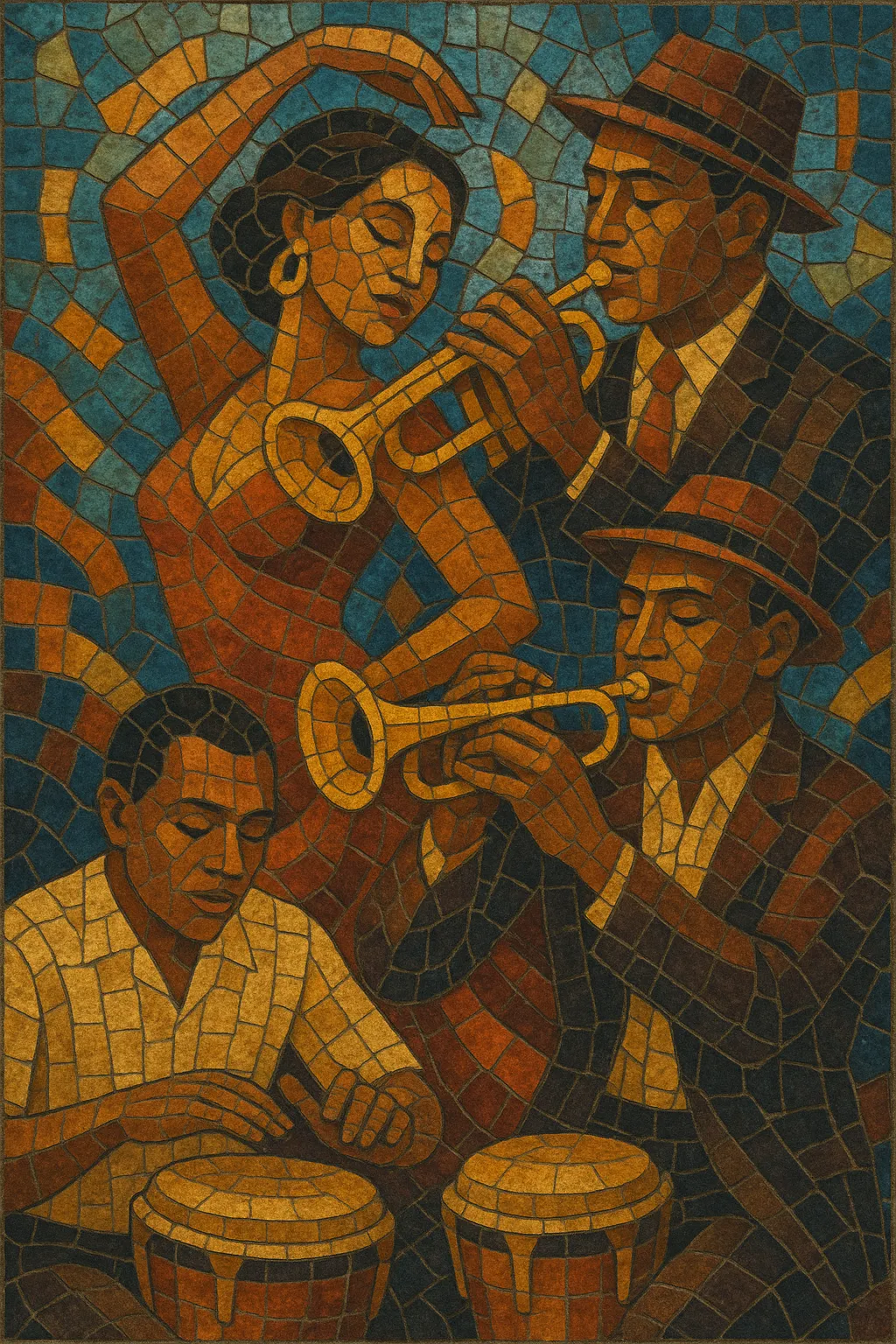Rhumba (spelled with an “h”) is the Americanized, ballroom- and big-band-friendly adaptation of Cuban rumba and related Afro‑Cuban dance music. Emerging in the United States during the Latin dance craze of the 1930s, it translated the clave-based grooves and romantic lyricism of Cuban music into a smoother, slower, and more arranged popular dance style suited to hotel ballrooms, Hollywood, and radio.
Compared with traditional Cuban rumba and son, American rhumba emphasizes clear phrase structure, a moderate tempo, and lush arrangements featuring strings, horns, and rhythm sections enhanced by Latin percussion. The result is a sensuous, elegant dance music that foregrounds romance and a steady, dancer-friendly pulse.
The American rhumba grew out of the intense U.S. fascination with Cuban music in the early 20th century. Afro‑Cuban styles such as rumba and son cubano, themselves shaped by the habanera rhythm and danzón orchestral traditions, reached U.S. audiences via touring bands, recordings, and the New York–Havana cultural corridor.
In 1930, Don Azpiazú’s hit recording of “El Manisero” (The Peanut Vendor) ignited a national craze for “rhumba.” Bandleaders like Xavier Cugat popularized a polished, ballroom-ready version that blended Cuban rhythms with American big-band arranging and jazz sensibilities. The music’s moderate tempo and romantic aura made it a staple of hotels, nightclubs, and film.
Dance studios and arrangers codified a slower, steady 4/4 “rhumba” suitable for instructional syllabi and social dancing. Orchestrations highlighted clear downbeats, prominent bass tumbao, and supportive Latin percussion, while retaining space for crooning vocals and Hollywood sheen. By mid-century, “rhumba” had become a key pillar of American Rhythm/ballroom repertoires.
The rhumba’s popularity paved the way for subsequent Latin dance booms in the U.S., creating a receptive market for mambo and cha-cha-chá and easing the adoption of Afro‑Cuban rhythmic concepts into jazz and popular music. Its lush, exoticized sound also informed postwar lounge, exotica, and space-age pop aesthetics.


